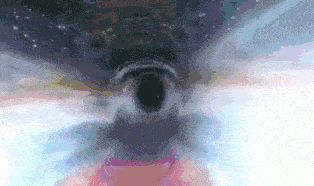1. 概述
在计算机科学中,存在多种优化算法,多宇宙优化算法(Multi-Verse Optimizer, MVO) 是其中之一。
本文中,我们将介绍 MVO 的基本原理和工作机制,随后通过一个数值示例演示其在优化问题中的应用。
2. 什么是 MVO?
MVO 是一种基于种群的元启发式优化算法,灵感来源于多宇宙理论中的物理概念:白洞、黑洞和虫洞。
该算法由 Seyedali Mirjalili 于 2015 年提出,用于解决数值优化问题。它模拟了多个宇宙之间的交互行为,通过这些交互不断逼近最优解。
3. 多宇宙理论简介
多宇宙理论认为,除了我们所处的宇宙之外,还存在多个平行宇宙。这些宇宙之间可能相互作用,甚至发生碰撞。每个宇宙都有其独特的物理规律。
3.1. 白洞
白洞是理论上存在的天体,与黑洞相反,它不断向外喷发物质和能量。虽然尚未被直接观测到,但“大爆炸”被认为是白洞的一种表现形式。

3.2. 黑洞
黑洞是一种引力极强、连光都无法逃脱的天体。它在宇宙中广泛存在,并对周围空间产生显著影响。

3.3. 虫洞
虫洞是连接宇宙不同区域的“时空隧道”,理论上允许物体在不同宇宙或同一宇宙的不同区域之间快速移动。

3.4. MVO 中宇宙的交互规则
MVO 模拟了以下宇宙交互规则:
✅ 白洞出现概率随宇宙膨胀率(inflation rate)增加而增加
✅ 黑洞出现概率随宇宙膨胀率增加而减少
✅ 膨胀率高的宇宙倾向于通过白洞向外发送物体
✅ 膨胀率低的宇宙倾向于通过黑洞接收物体
✅ 所有宇宙中的物体都可能通过虫洞随机向最优宇宙靠拢
4. MVO 数学模型
MVO 的搜索过程分为两个阶段:探索(exploration) 和 开发(exploitation):
- 白洞与黑洞 用于探索搜索空间
- 虫洞 用于开发已有解,逐步逼近最优解
每个解对应一个“宇宙”,每个变量对应宇宙中的一个“物体”。解的质量由其适应度函数值决定,这个值与膨胀率成正比。
4.1. 轮盘赌机制
MVO 使用轮盘赌机制选择白洞对应的宇宙。每次迭代中,所有宇宙按适应度排序后,通过轮盘赌方式选择一个宇宙作为白洞来源。

4.2. 宇宙选择的数学模型
设宇宙集合为:
$$ U = \begin{bmatrix} x_1^1 & x_1^2 & \cdots & x_1^d \ x_2^1 & x_2^2 & \cdots & x_2^d \ \vdots & \vdots & \ddots & \vdots \ x_n^1 & x_n^2 & \cdots & x_n^d \end{bmatrix} $$
其中 $ d $ 为参数数量,$ n $ 为宇宙总数。
选择宇宙的公式如下:
$$ U = \left{ \begin{array}{ll} x_k^j, & r_1 < \text{normalized inflation rate}(U_i) \ x_i^j, & r_1 \geq \text{normalized inflation rate}(U_i) \end{array} \right. $$
其中:
- $ x_k^j $:第 $ k $ 个宇宙的第 $ j $ 个参数
- $ x_i^j $:第 $ i $ 个宇宙的第 $ j $ 个参数
- $ r_1 $:[0,1] 区间内的随机数
4.3. 虫洞机制的数学模型
虫洞机制用于局部搜索,其公式如下:
$$ x_i^j = \left{ \begin{array}{ll} X_j + TDR \times ((UB_j - LB_j) \times r_4 + LB_j), & r_3 < 0.5 \ X_j - TDR \times ((UB_j - LB_j) \times r_4 + LB_j), & r_3 \geq 0.5 \end{array} \right. $$
其中:
- $ X_j $:最优宇宙的第 $ j $ 个参数
- $ UB_j, LB_j $:第 $ j $ 维的上下界
- $ r_2, r_3, r_4 $:随机数
- $ WEP $:虫洞存在概率
- $ TDR $:移动距离率
参数更新公式:
$$ WEP = \min + l \times \left(\frac{\max - \min}{L}\right) $$
$$ TDR = 1 - \frac{l^{1/p}}{L^{1/p}} $$
其中 $ l $ 为当前迭代次数,$ L $ 为最大迭代次数,$ p $ 为开发精度。
5. MVO 算法实现
5.1. 算法流程
algorithm MultiVerseOptimizer(U):
// U: 初始随机宇宙集合
Initialize WEP, TDR, Best Universe
SU <- Sorted Universes
NI <- Normalize inflation rate
while not end condition met:
Evaluate fitness of all universes
for each universe i:
Update WEP and TDR
for each object j:
r1 = random()
if r1 < NI(U[i]):
selected = RouletteWheelSelection(-NI)
U[i][j] = SU[selected][j]
r2 = random()
if r2 < WEP:
r3 = random()
r4 = random()
if r3 < 0.5:
U[i][j] = Best[j] + TDR * ((ub[j] - lb[j]) * r4 + lb[j])
else:
U[i][j] = Best[j] - TDR * ((ub[j] - lb[j]) * r4 + lb[j])
return Best Universe
5.2. 时间复杂度分析
MVO 的时间复杂度主要受以下因素影响:
- 迭代次数 $ l $
- 宇宙数量 $ n $
- 参数维度 $ d $
每次迭代中需进行排序(O(n²))和轮盘赌选择(O(n log n)),因此总时间复杂度为:
$$ O(MVO) = O(l(n^2 + n \cdot d \cdot \log n)) $$
6. 数值示例
6.1. 初始化参数
设定宇宙数量 $ N = 4 $,初始化如下:
| 编号 | 参数1 | 参数2 | 参数3 | 参数4 | 参数5 |
|---|---|---|---|---|---|
| 1 | -70.85 | 85.17 | -43.56 | -26.99 | -33.58 |
| 2 | 17.01 | -1.47 | 95.19 | -38.17 | 79.50 |
| 3 | -85.33 | 30.98 | -92.71 | -75.82 | -0.07 |
| 4 | 64.47 | 78.02 | -34.75 | 83.15 | 23.06 |
6.2. 计算适应度值
使用如下适应度函数:
$$ f(x) = 4x_1^2 - 2.1x_1^4 + \frac{1}{3}x_1^6 + x_1x_2 - 4x_2^2 + 4x_2^4 $$
计算每个宇宙的适应度值如下:
| 编号 | 适应度值 |
|---|---|
| 1 | 3.8063e⁴ |
| 2 | 4.5605e⁴ |
| 3 | 4.1588e⁴ |
| 4 | 3.9376e⁴ |
6.3. 选择最优宇宙
适应度最小的宇宙为当前最优解:
✅ 最优宇宙编号:1
✅ 适应度值:3.8063e⁴
更新参数:
$$ WEP = 0.2080,\quad TDR = 0.5358 $$
6.4. 轮盘赌选择白洞宇宙
使用轮盘赌机制选择白洞宇宙:
- 适应度越高,越可能是白洞
- 当前选择宇宙 2 为白洞
6.5. 虫洞机制更新
使用虫洞机制更新宇宙参数:
$$ x_i^j = \left{ \begin{array}{ll} X_j + TDR \times ((UB_j - LB_j) \times r_4 + LB_j), & r_3 < 0.5 \ X_j - TDR \times ((UB_j - LB_j) \times r_4 + LB_j), & r_3 \geq 0.5 \end{array} \right. $$
假设 $ r_2 = 0.6708 > WEP = 0.2080 $,则不执行虫洞更新。
6.6. 更新最优宇宙
重复上述过程,直到达到最大迭代次数。最终找到最优解:
✅ 最优适应度值:0.0049209
7. 总结
MVO 是一种基于多宇宙理论的元启发式优化算法,适用于解决全局无约束和有约束优化问题。
✅ 优点:
- 探索能力强(白洞/黑洞机制)
- 开发能力强(虫洞机制)
- 收敛速度快
- 易于实现
⚠️ 注意:
- 参数设置对性能影响较大
- 适合高维非线性问题,但不适用于实时性要求极高的场景
MVO 在工程优化、机器学习参数调优、图像处理等领域均有广泛应用。